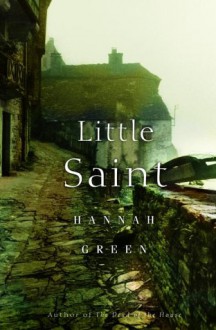This is a book written in ecstasy. In the early 1970s, the writer Hannah Green and her husband, Jack Wesley, an artist, came upon a village called Conques, curled like a conch shell in the mountains of south-central France. Entranced, they returned the next year, and the next, living...
show more
This is a book written in ecstasy. In the early 1970s, the writer Hannah Green and her husband, Jack Wesley, an artist, came upon a village called Conques, curled like a conch shell in the mountains of south-central France. Entranced, they returned the next year, and the next, living there for months at a time, for more than twenty years. Hannah Green was attracted to the craggy landscape, the ancient language, the traditions of the region. Most of all, she felt herself drawn to the story of the little saint whose spirit fills the lives in that place. In the fourth century, a girl--who becomes this book's "shining center"--had refused the demand of a Roman ruler to deny her faith; she was betrayed by her father and then beheaded. She was twelve years old. Sainte Foy's remains came to be the "golden spark" that inspired a cult and inspired this American writer, a Protestant and a "stranger to saints," to devote the rest of her life to writing one book. To do so, Hannah Green had to improve her French to the point where she could translate original documents. She and her husband were soon accepted by the villagers--indeed, were loved by them. In time, Hannah began to sense that she was part of a centuries-long parade of pilgrims who came to Conques and were transformed. Ostensibly the story of one day, the twenty-four hours described here have twenty centuries woven through them. The result is a rare work, in part history, biography, celebration, meditation, inspiration. It is an ode to joy, death, the earthy, and the spiritual. The prose spirals like a shell, poetic or plainsong. It is good-humored, yet it is also the memoir of intensely felt, almost painfully loving personal experience. Written in a kind of rapture, Little Saint tells the story of a living presence, of her travels in time; of holy and healing places and characters; of fields of force and unexplained emanations; and of a saintly girl who makes jokes. It is a story as well of one woman, deeply American, who found in France while on holiday a place and a person for all time.
show less

